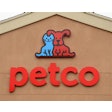
The Packaged Facts report “Gen Z and Millennials as Pet Market Consumers: Dogs, Cats, Other Pets” analyzed and tabulated what makes Gen Z and millennial pet owners unique, highlighted three opportunities for pet food marketers to most profitably appeal to the 57 million pet owners in this 18- to 39-year-old age group:
- Vet Friendly Pet Owners: Gen Z and millennial pet owners are far more likely to depend on their veterinarians for advice about a broad spectrum of pet products, making the veterinary channel an especially attractive way to reach 18- to 39-year-old pet owners.
- E-Commerce Shoppers with Brick-and-Mortar Loyalties: Compared to their Gen X and Boomer counterparts, not surprisingly, Gen Z and millennial pet owners have a much higher propensity to shop online for pet products. At the same time, 18- to 39-year-old pet owners remain loyal to brick-and-mortar pet retailers, and are especially avid consumers of the pet care services provided by brick-and-mortar retailers.
- Millennial Clout and Influence: Millennial pet owners differ significantly from Gen X and Boomer pet owners, and are now likely to have completed their education, be established in a job or career, generate substantial employment income and head their own households. Packaged Facts National Pet Owner Survey data cited in the report indicate that millennial pet owners with a household income of $75,000 or higher are more than twice as likely as all other pet owners to have spent $50 or more on pet products in the last 30 days.
Future pet food buying generations
The future of the pet industry in America lies not only with millennial pet owners, but in the hands of their younger counterparts in Generation Z, who are just entering adulthood, according to the report. These demographics are critical to the bottom line of pet product and service marketers because the vanguard of the Boomer generation is reaching the age when pet ownership enters steep decline. Moreover, Boomers will be succeeded by Gen X, who spend heavily on pet products and services but are a relatively small population cohort.
“Gen Z and Millennials as Pet Market Consumers: Dogs, Cats, Other Pets” highlights pet ownership trends among Gen Z and Millennials and identifies key marketing opportunities for these two segments of pet market consumers. It includes an analysis of how Gen Z and Mllennial pet owners bond with and manage the health of their pets, and provides an in-depth view of consumer attitudes, shopping behavior and spending patterns with respect to pet products and services. It also provides separate profiles of Gen Z and Mllennial dog and cat owners as well as those in who own birds, fish, reptiles and rabbit or hamsters.
For purposes of this analysis of Gen Z and Mllennial consumers, this Packaged Facts report focused on pet owners within the following age segments:
- 18- to 24-year-olds (which includes the leading edge of Gen Z)
- 25- to 39-year-olds (Millennials)
- 40- to 54-year-olds (Gen X)
- 55- to 74-year-olds (mainly Boomers)
Pet food market analysis methodology
Consumer data in this report derive from two primary sources. The first source consists of Packaged Facts National Pet Owner Surveys conducted in December 2016 and February and October 2017. These surveys reflect a panel of 2,000 U.S. adults (age 18+) that is balanced to the national population on the primary demographic measures of gender, age bracket, race/ethnicity, geographic region, marital status, presence or absence of children in the household and household income.
Another primary source of consumer data in this report is the Simmons National Consumer Survey for Summer 2017, which was fielded between July and August 2017. For trend analysis of pet ownership, the report uses as a baseline the Spring 2007 Simmons survey. On an ongoing basis, Simmons conducts booklet-based surveys of a large and random sample of consumers (approximately 25,000 for each 12-month survey compilation) who in aggregate represent a statistically accurate cross-section of the U.S. population.
In addition, U.S. Government data sources include data from the U.S. Census Bureau and the Consumer Expenditure Survey of the Bureau of Labor Statistics (BLS). The age groupings used by BLS data (18 to 24, 25 to 34 as well as 18 to 35) generally conform with those used by other data sources used in this report. The report is also based upon data collected from industry sources such as company websites, trade publications and consumer blogs.















